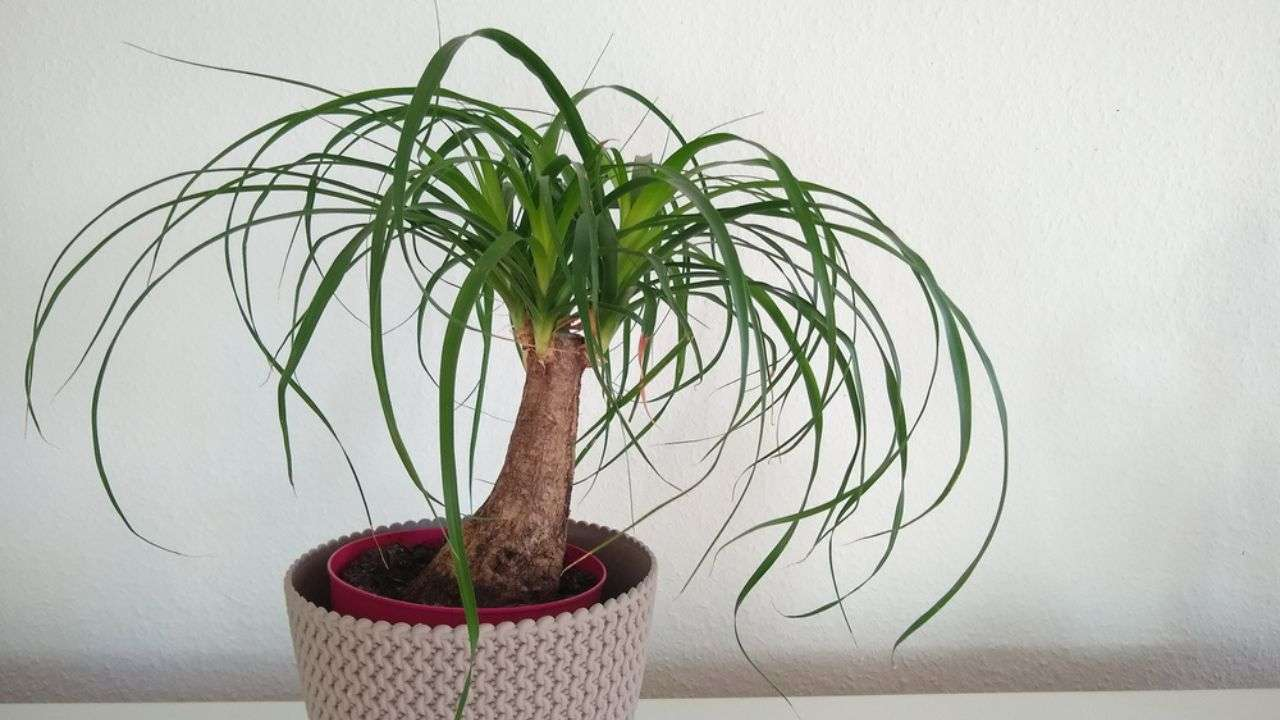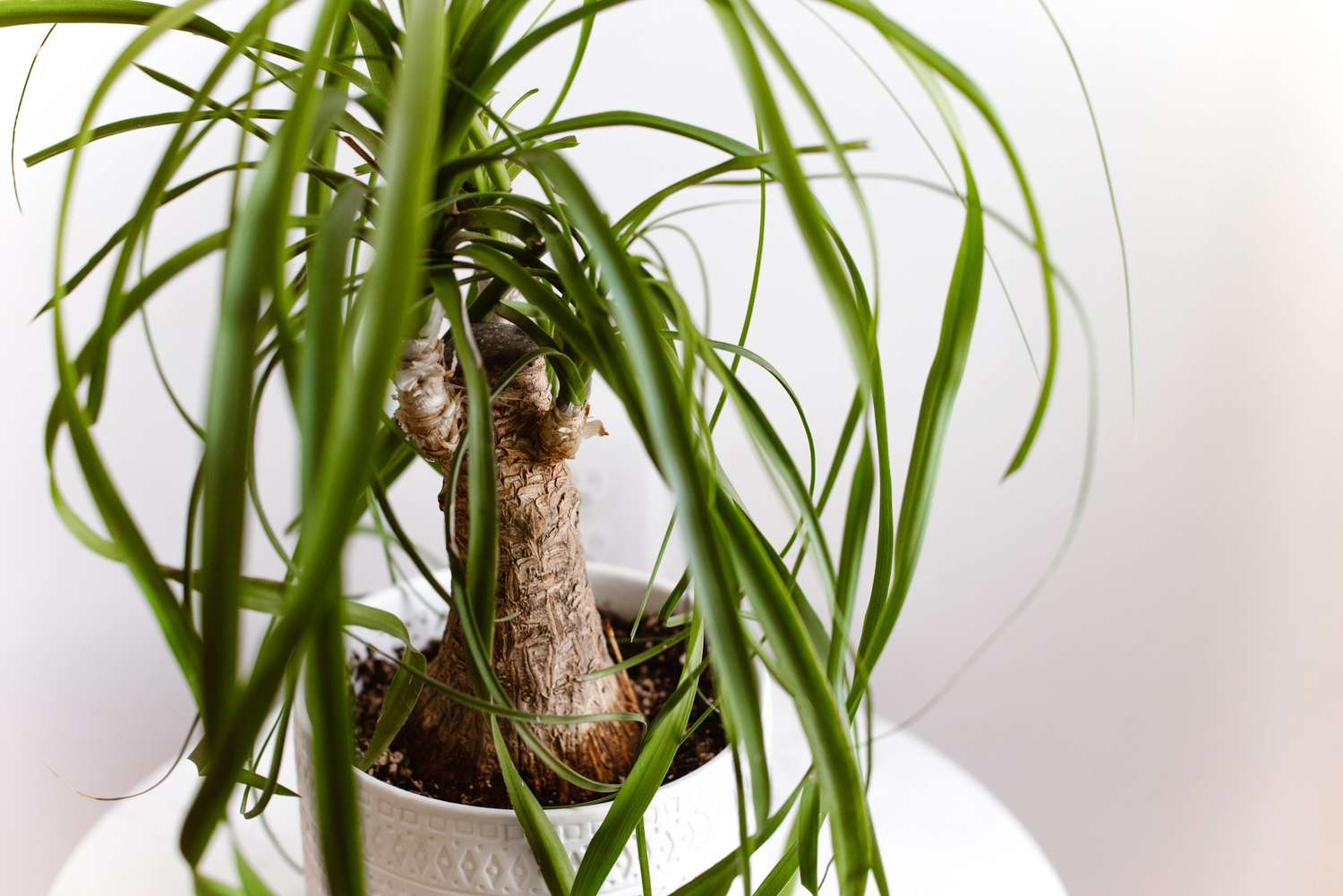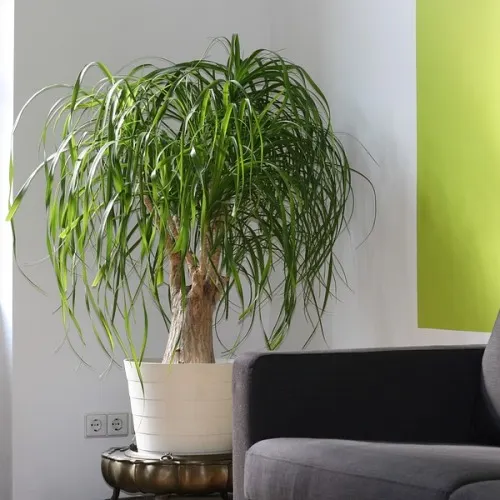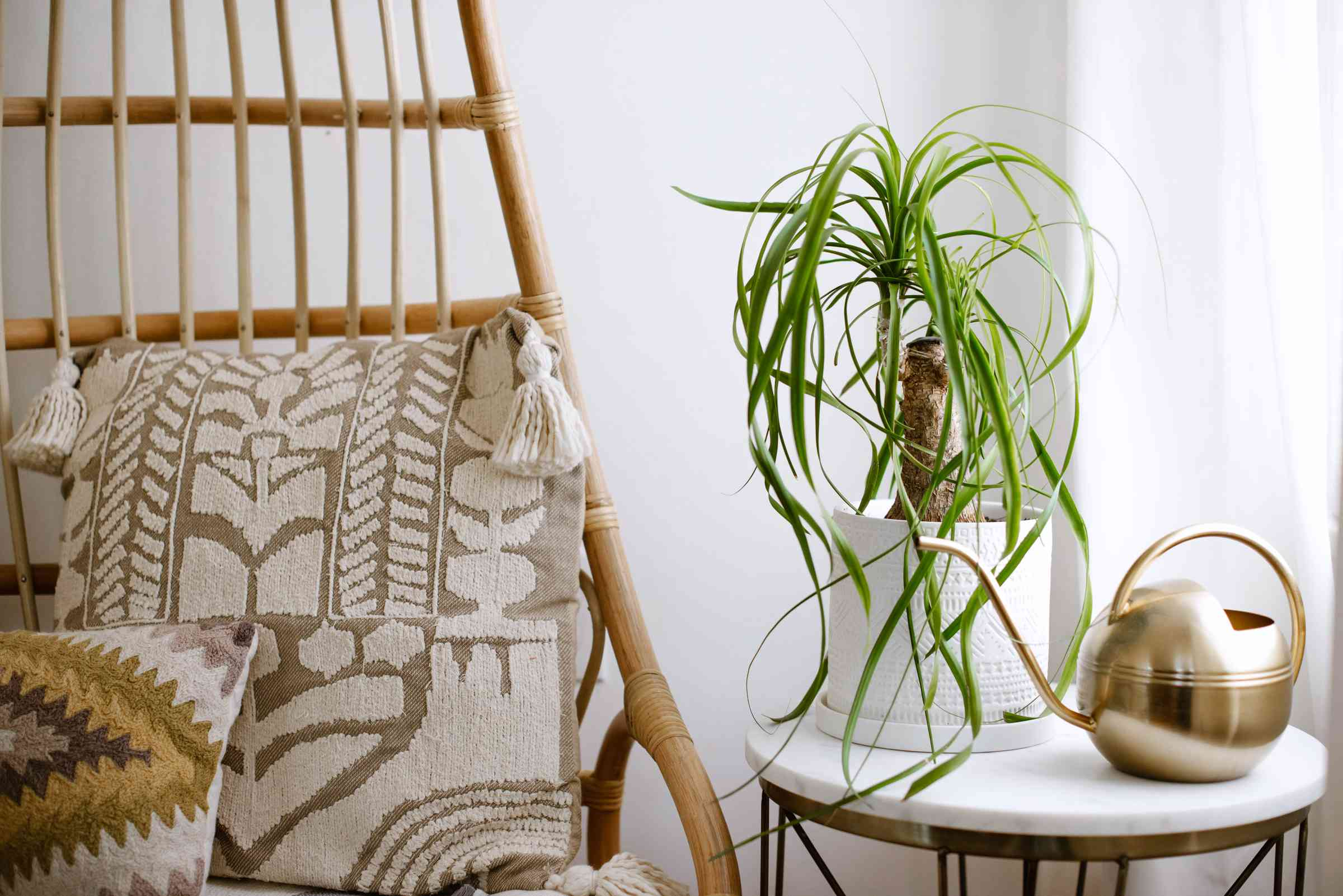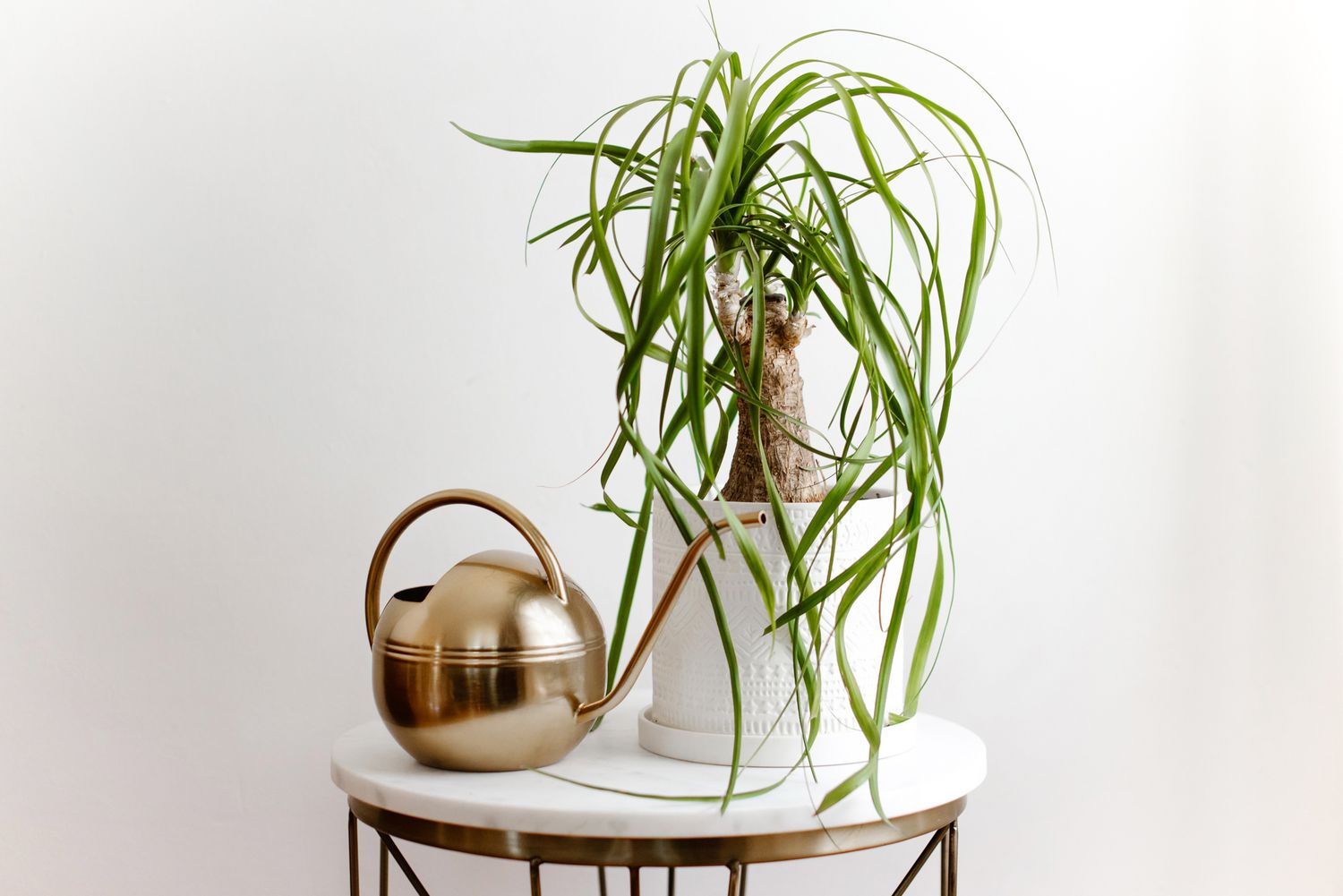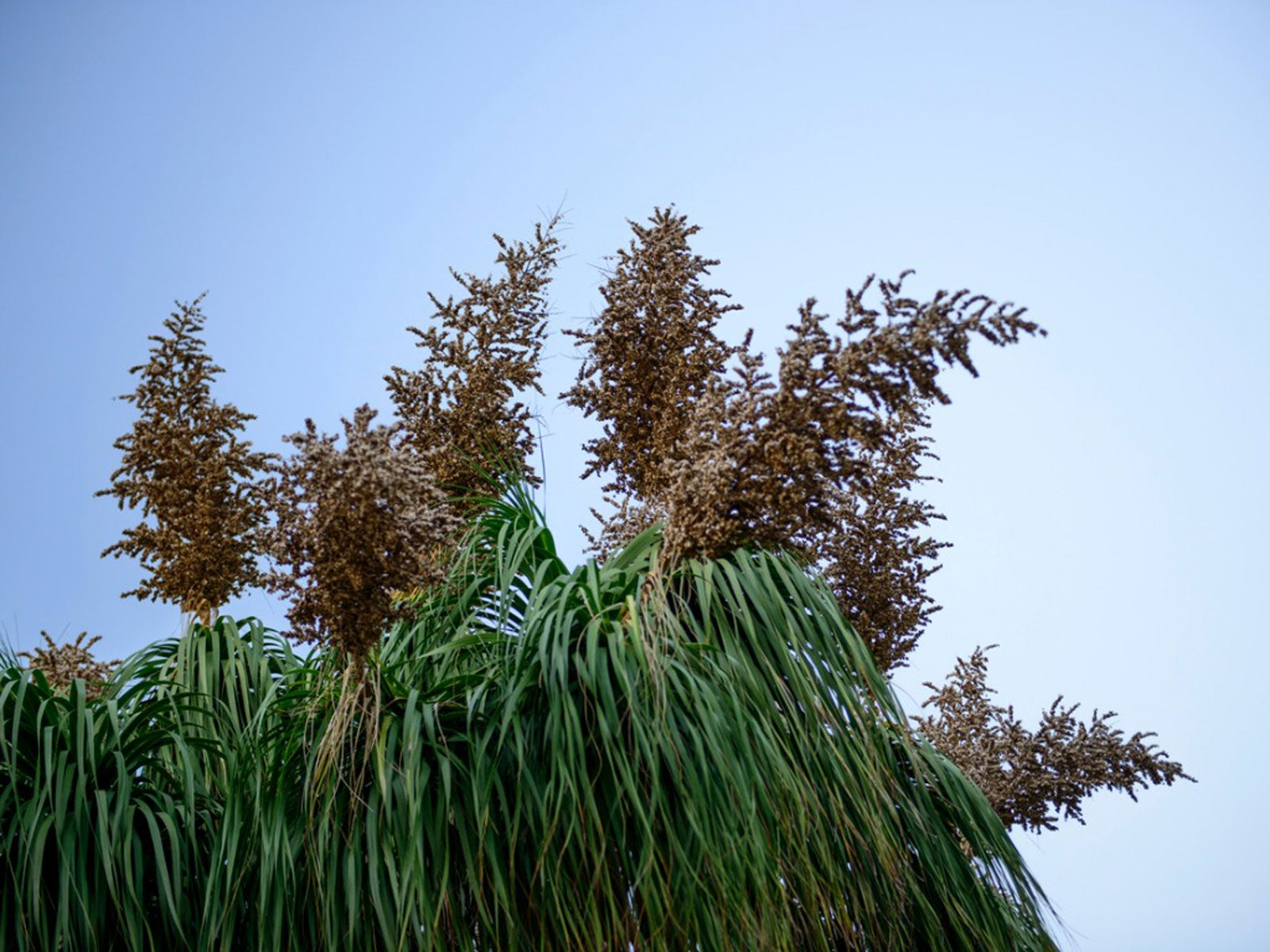HousePlantJoy is supported by our audience. When you purchase through one of our links, we may earn a small affiliate commission. As an Amazon Associate I earn from qualifying purchases. Your cost is not affected.
==================
As a proud owner of a majestic ponytail palm, I’m thrilled to share my firsthand experience of how this exquisite houseplant has transformed my living space. Since I welcomed this botanical beauty into my home, its presence has been enchanting. The impressive outline of its slender trunk, crowned with a cascade of luxuriant foliage, immediately brings a sense of sophistication and vibrancy to any space.
Join me as we immerse ourselves in the captivating world of ponytail palms, discovering how this remarkable plant can enhance both your home and your life. Whether you are searching for a subtle touch of greenery for your space or longing for a steadfast botanical companion, rest assured that the ponytail palm will surpass your expectations and captivate your senses.
Ponytail Palms: Elevating Your Home with Natural Charm
Photo by: Planet Natural
Its effortless charm and low-maintenance nature truly set the ponytail palm apart. It thrives in various indoor environments with minimal care requirements, bringing a refreshing burst of greenery to even the most neglected corners of my home. Its resilience and adaptability make it the ideal companion for hectic lifestyles, providing a perpetual wellspring of serenity and charm amid the daily whirlwind.
But beyond its aesthetic appeal and easy-care attributes, the ponytail palm has become more than just a decorative accent in my home. It serves as a reminder of the natural world outside, fostering a sense of connection to the earth and grounding me in moments of stress or uncertainty. Its presence is a soothing balm for the soul, infusing my living space with a calming energy that encourages relaxation and rejuvenation. Let’s take a closer look at this houseplant.
Key Highlights
- The Ponytail palm, also known as the Elephant’s foot plant, is favored as a houseplant due to its easy care and distinctive appearance. It’s formally referred to as Beaucarnea recurvata.
- The Ponytail palm (Beaucarnea recurvata) can develop into a tree-like beauty when grown outdoors, provided the right conditions.
- Ponytail palms could be an ideal addition to your home. They are low-maintenance, long-lasting, and safe for humans, cats, and dogs.
- With proper care, from adequate lighting to fertilization, along with other maintenance tips, your Ponytail palm is sure to thrive.
- With some patience, it might even surprise you with flowers once it matures (which can take over ten years).
Ponytail Palm Demystified: Exploring the Beauty and Basics
Photo by: The Spruce
The Ponytail palm, also called the Elephant’s foot plant, is a hit as a houseplant because it’s easy to care for and has a unique appearance. It’s officially known as Beaucarnea recurvata, but you can call it the Ponytail plant. Even though it’s often called a palm, it’s a succulent from the Asparagaceae family, not the palm family. Fun fact: it’s not related to true palms at all! Originally from dry regions like southeastern Mexico, Belize, and Guatemala, this plant loves dry conditions.
Unveiling the Appearance of Beaucarnea Recurvata
Photo by: Australian Plants Online
The Ponytail Palm, also fondly dubbed the Elephant’s Foot Plant owing to its unique base, stands out among houseplants. Let’s delve into its physical characteristics:
- Caudex: The ponytail palm’s most striking feature is its bulbous stem, which resembles an elephant’s foot and stores water. Usually gray and smooth, the stem stores the plant’s moisture.
- Trunk: Emerging from the bulbous trunk is a single, slender trunk, often with slight branching.
- Leaves: The plant’s signature feature is its long, strap-like leaves, which can reach up to 6 feet in length. Vibrant green and gracefully drooping from the trunk resemble a ponytail, hence the name. The leaves have a slight curve and pointed tips.
Additional Details:
- Growth Rate: These plants are slow-growing, taking time to develop, typically adding less than a foot of new growth annually.
- Flowers: Mature ponytail palms (over ten years old) may occasionally produce small clusters of white flowers, though this is rare indoors.
From Indoor Elegance to Outdoor Majesty: Unraveling the Growth of the Ponytail Palm
Photo by: Houseplant Resource Center
The ponytail palm (Beaucarnea recurvata) can transform into a tree-like beauty when grown outdoors under the right conditions. Let’s break it down:
Outdoors (Tree Vibes)
With plenty of room to stretch out, loads of sunlight, and warm temps, a ponytail palm planted outside can spread its wings. It can shoot up to heights of 15 feet or even 30 feet if conditions are just right! Picture a thicker trunk and a luscious crown of leaves—it’s like having your own little ponytail palm tree right in your yard, especially in warmer climates.
Indoors (Indoor Plant Vibes)
When you bring a ponytail palm inside, it’s like giving it a cozy little apartment. With limited space, light, and nutrients compared to the great outdoors, these palms tend to stay petite. Think around 6-8 feet tall, with a single trunk and a modest number of leaves. They’re still gorgeous but won’t quite reach the classic tree-like appearance they can achieve outside. So, if you’re thinking of growing ponytail palms, remember they’ll flourish into their tree-like selves while soaking up the outdoor sunshine.
Here Are a Few More Things to Consider:
- Climate: Ponytail palms soak up the sun in warm climates, like USDA zones 9-10. They thrive when they’ve got plenty of bright light to bask in. But they might grow less tall or lush if you’re in colder areas.
- Pot Size: Whether indoors or outdoors, planting your ponytail palm in a pot will limit its size. It’ll likely stay a bit smaller than planting it straight in the ground.
So, even though your ponytail palm might not become a towering giant like some outdoor trees when it’s inside, with the right care and plenty of bright light, it’ll still grow into a pretty impressive houseplant.
Ponytail Palms: A Perfect Fit for Your Home?
Photo by: The Spruce
Ponytail palms could be the perfect fit for your home, and here’s why:
Low Maintenance
These guys are like the champs of easy care. They’re cool with being left alone for a bit, needing occasional watering and not much fuss. So, if you’re a busy bee or just starting with houseplants, they’re a solid choice.
Air Purification
Ponytail palms are on NASA’s list of top air-cleaning plants. They’re like little detoxifiers, sucking up nasty stuff like formaldehyde and making your indoor air cleaner and healthier.
Adaptable to Light
They’re open about lighting. Sure, they love soaking up indirect sunlight, but they can handle lower light, too. So, whether your place is flooded with sun or on the shady side, they’ll find their happy spot.
Unique Looks
Have you seen a ponytail palm? They’re unique with that funky swollen base that looks like an elephant’s foot, plus those long, flowy leaves that give them their name. They’re like a mini tropical getaway right in your living room.
Slow Growth
Sometimes, slow and steady wins the race. Ponytail palms are slow growers, so you won’t wake up one day to find them taking over your space. Perfect for cozy apartments or homes with limited room to spare.
Longevity
With a bit of TLC, these guys can last for years, even decades. That means you’ll have a trusty green companion by your side for a long time.
And hey, bonus points: they’re pretty tough against pests like spider mites and diseases like stem rot, and they even help bump up the humidity a tad, which can be a lifesaver in dry climates. So yeah, ponytail palms are definitely worth considering for your home sweet home. Just plant them in shallow pots and keep them in indirect light to keep them happy and healthy.
Is the Ponytail Palm Toxic?
Photo by: The Spruce
Ponytail palms are safe for humans, cats, and dogs! These palms pose no danger to your household members or furry friends. But here’s a heads-up: while the plant itself won’t cause any harm, those leaves can be a bit sharp because of their pointy ends. So, watch out for any accidental pokes!
Ponytail Palm Care: Keeping Your Green Companion Happy and Healthy
Photo by: Planet Natural
Here’s the lowdown on how to give your ponytail palm the TLC it needs to flourish:
Lighting
- Bright, indirect sunlight is essential. Aim for a spot near a south, east, or west window where your plant can soak up several hours of indirect sunlight daily.
- Watch out for direct sunlight; too much sunlight can scorch those leaves.
- It can handle lower light, too, but it knows its growth might take a bit longer.
Watering
- Only water it if the soil is dry. This is key to avoiding root rot, bacterial leaf streak, and other diseases that can be very damaging to ponytail palms.
- How often? It depends on factors like light, temperature, and pot size. Generally, plan to water every 2-4 weeks in spring and summer and even less in winter.
- Look for signs your plant’s thirsty, like droopy leaves or a shriveled-up caudex (that’s the chubby base).
Soil and Potting
- Go for a succulent potting mix, or whip up your own desert soil mix for your ponytail palm. It loves well-draining, organically rich soil that mimics its native environment.
- Make sure your pot has drainage holes, too. They’re essential for preventing soggy roots.
- Only repot when the roots burst out of the pot, usually every few years. And when you do, go up a smidge in pot size.
Fertilizing
- Keep it chill with the feeding. Give it a balanced liquid fertilizer during its growing season.
- But give it a break in fall and winter—no need for fertilizer during those cooler months.
Other Care Tips
- Your ponytail palm is easygoing in terms of humidity. It can handle average indoor levels, but a misting now and then, especially if you’re in a dry area, won’t hurt.
- Keep the temp cozy—between 60-85°F (15-29°C) is just right. And steer clear of chilly drafts or air vents.
- Give those leaves a wipe-down daily to dust them off and help them soak up more light.
- And last but not least, trim off any dead or brown leaves to keep your plant looking sharp.
Follow these simple steps, and your ponytail palm will live its best indoor life, adding a touch of class and fresh air to your space for years.
Here’s an additional video on how to take care of the ponytail palm.
By: Succulents Box
Ponytail Palm Blooms: Unveiling the Mystery
Photo by: Gardening Know How
So, here’s the deal with ponytail palms (Beaucarnea recurvata): they’re not exactly known for being big bloomers, especially when chilling indoors. With some good care and patience, your plant might surprise you once it’s matured (we’re talking over ten years old). Now, picture this: if your ponytail palm decides to show off, you’ll be treated to some small, white flowers that are cute and smell amazing.
They grow in clusters on a tall stalk that pops up from the tip-top of the plant. And hey, after the flowers come and go, you might even spot some tiny capsules hanging around, possibly holding some seeds. Regarding seasonal bloomer flower color, this palm offers a delightful surprise with its charming white blooms.
Ponytail Palm Flower Facts: Blooms, Beauty, and Beyond
Check out these cool tidbits about ponytail palm flowers:
Separate Genders: Ponytail palms are a bit like humans—they come in male and female versions. So, if you’re hoping for seeds, you’ll need both types around.
Colorful Characters: Regarding flowers, males usually rock a creamy ivory hue, while the ladies might flaunt a hint of pink.
Sweet Scents: If you catch a whiff of a ponytail palm flower, you’re in for a treat. They’re known for their sweet, delightful fragrance.
Short and Sweet: Sadly, these blooms don’t last long. You have just a few weeks to enjoy them before they bid farewell.
Here’s an additional video about other palms that are good for home.
By: That’s Mary
Embracing Tranquility: The Enchantment of Ponytail Palms
The ponytail palm transformed my living space into a botanical oasis with its effortless charm and low-maintenance nature. Its striking silhouette, resilience, and adaptability made it a perfect fit for any home. Beyond its aesthetic appeal, that plant reminded me of the natural world, grounding me in moments of stress and infusing my space with a calming energy. Whether indoors or outdoors, the ponytail palm is enchanted with its unique appearance and easy-care attributes. Each aspect of that plant added to its allure, from its bulbous base to its graceful leaves.
While its occasional blooms were short-lived, they offered a delightful surprise with their charming white color and sweet fragrance. As a proud owner of a majestic ponytail palm, I invite you to explore the captivating world of this remarkable plant and discover how it can enhance your home and your life. Visit Houseplant Joy’s website today to find your perfect botanical companion and bring the beauty and tranquility of nature into your home.
FAQS
Did I Need to Prune My Ponytail Palm?
You usually don’t have to prune a ponytail palm for it to grow well. They grow slowly and don’t become bushy or overgrown easily. But sometimes you might prune to: Take off brown or yellow leaves:
Does Rich Sandy Soil Help My Ponytail Palm?
Rich sandy soil can benefit your ponytail palm, especially when grown outdoors. This type of soil is particularly helpful because ponytail palms are native to Central America’s dry, semi-desert regions.
Is the Ponytail Palm in the Agave Family?
The Ponytail Palm, scientifically known as Beaucarnea recurvata, does belong to the Agave family. Despite its common name, it’s not a true palm tree.
Step into the World of Houseplant Joy: Connect with Us Today!
Ready to elevate your houseplant game? Explore our lively social media hub, where you’ll find:
- Gorgeous snapshots on Instagram
- Inspiring boards on Pinterest
- Quick tips and news on Twitter
- Educational videos on YouTube
- Fun and quirky moments on TikTok
Join our community over on Facebook and let’s cultivate our green spaces together!


